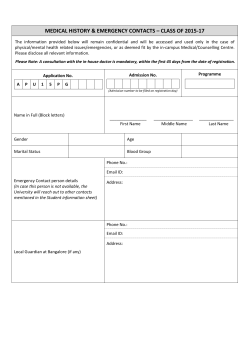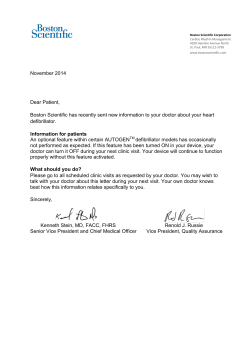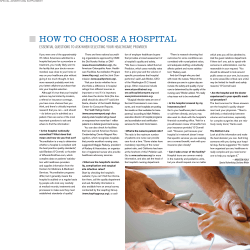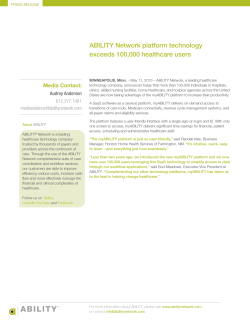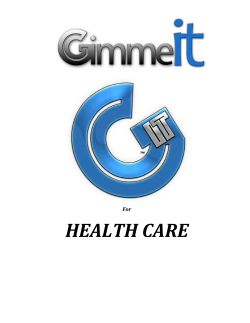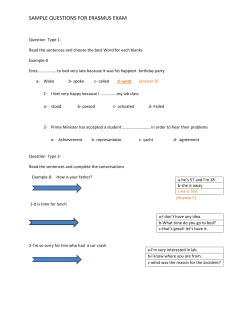
Am I At Risk of Falling?
For more information go to: • National Center for Injury Prevention and Control (CDC) http://www.cdc.gov/injury/ • Public Health Agency of Canada (PHAC) http://www.phac-aspc. gc.ca/seniors-aines/index-eng.php The more risk factors a person has, the greater the chances of falling. Five things you can do to prevent falls: Alternate versions of this brochure are available upon request from Wellington-Dufferin-Guelph Public Health at 1-800-265-7293. Staying Independent Falls are the main reason older adults lose their independence. This brochure was developed in collaboration with: 1. Exercise daily to build strength and improve balance. 2. Wear safe footwear. 3. Have regular eye check-ups. 4. Make your home safer. • Remove clutter and tripping hazards. • Add railings on all stairs and grab bars in the bathroom. • Have good lighting, particularly on stairs. 5. Talk to your healthcare provider to learn more about your risk. To find out if you are at risk: 1. Answer the statements in this pamphlet. Adapted with permission from the “Stay Independent” brochure from the Centers for Disease Control and Prevention – National Center for Injury Prevention and Control 2. Take this form to your healthcare provider to discuss your risk factors. Am I at risk of falling? Instructions: Circle “YES” or “NO” for each statement below. Add up the total number of points for each “YES” answer in the box. CIRCLE “YES” OR “NO” HELPFUL TIPS I have fallen in the past year. YES 2 NO 0 Learn more about reducing your fall risk, as people who have fallen are more likely to fall again. I use or have been advised to use a cane or walker to get around safely. YES 2 NO 0 Talk with a physiotherapist about the most appropriate walking aid for your needs. Sometimes I feel unsteady when I am walking. YES 1 NO 0 Exercise to build strength and improve your balance. I steady myself by holding onto furniture when walking at home. YES 1 NO 0 Do balance exercises every day. Remove hazards at home that might cause a trip or slip. I am worried about falling. YES 1 NO 0 Knowing how to prevent a fall can reduce fear and promote active living. I need to push with my hands to stand up from a chair. YES 1 NO 0 Strengthening your muscles can reduce your risk of falling and being injured. I have some trouble stepping up onto a curb. YES 1 NO 0 Daily exercise can help improve your strength and balance. I often have to rush to the toilet. YES 1 NO 0 Talk with your doctor or healthcare provider about treatment options. I have lost some feeling in my feet. YES 1 NO 0 Talk with your doctor or podiatrist, as numbness in the feet can cause stumbles and falls. I take medication that sometimes makes me feel light-headed or more tired than usual. YES 1 NO 0 Talk with your doctor or pharmacist about medication side effects that may increase the risk of falls. I take medication to help me sleep or improve my mood. YES 1 NO 0 Talk with your doctor or pharmacist about safer ways to get a good night’s sleep. I often feel sad or depressed. YES 1 NO 0 Talk with your doctor or healthcare provider about how you are feeling. Ask for help if you need it. If you scored 4 points or more, you may be at risk for falling. Discuss your risk factors with your healthcare provider. TOTAL SCORE: _____________
© Copyright 2025

